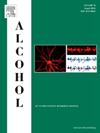Effect of alcohol consumption on risk of hypertension based on alcohol-related facial flushing response: From the health examinees study
IF 2.5
4区 医学
Q3 PHARMACOLOGY & PHARMACY
引用次数: 0
Abstract
Background
Alcohol consumption is a significant public health concern in Korea, with many individuals engaging in risky drinking behaviors. This study aims to analyze the association between facial flushing responses and the progression of hypertension in Korean adults, stratified by gender, using a large-scale prospective cohort study.
Methods
This study included 39,868 participants (10,868 males and 29,000 females) from the health examinees cohort. Participants were divided into two groups according to their weekly drinking patterns (moderate and heavy) and facial flushing responses (non-flusher and flusher) for statistical analysis. A multivariate Cox proportional hazards regression model was used to calculate hazard ratios and 95% confidence intervals between flushing response after alcohol consumption and hypertension risk.
Results
In males, the flusher group with a moderate alcohol intake pattern had a decreased risk of incident hypertension compared with non-flushers. In females, the flusher group had relatively higher risk of pre-hypertension and hypertension compared to the non-flusher group.
Conclusion
The association between facial flushing and hypertension varies depending on the level of alcohol consumption and should be considered in relation to gender differences. Further research is needed to understand the relationship between facial flushing response and the risk of hypertension based on alcohol consumption levels.
基于与酒精相关的面部潮红反应,饮酒对高血压风险的影响:来自健康体检者研究。
背景:在韩国,饮酒是一个重大的公共卫生问题,许多人都有高风险的饮酒行为。本研究旨在通过一项大规模的前瞻性队列研究,按性别分层分析韩国成年人面部潮红反应与高血压进展之间的关系:本研究纳入了 39,868 名健康体检者队列中的参与者(男性 10,868 人,女性 29,000 人)。根据每周饮酒模式(中度和重度)和面部潮红反应(非潮红和潮红)将参与者分为两组进行统计分析。采用多变量考克斯比例危险回归模型计算饮酒后脸红反应与高血压风险之间的危险比和95%置信区间:在男性中,中等酒精摄入模式的潮红组比非潮红组发生高血压的风险更低。结论:面部潮红与高血压之间存在关联:面部潮红与高血压之间的关系因饮酒水平而异,应考虑到性别差异。要了解面部潮红反应与高血压风险之间的关系,还需要进一步研究酒精消费水平。
本文章由计算机程序翻译,如有差异,请以英文原文为准。
求助全文
约1分钟内获得全文
求助全文
来源期刊

Alcohol
医学-毒理学
CiteScore
4.60
自引率
4.30%
发文量
74
审稿时长
15.6 weeks
期刊介绍:
Alcohol is an international, peer-reviewed journal that is devoted to publishing multi-disciplinary biomedical research on all aspects of the actions or effects of alcohol on the nervous system or on other organ systems. Emphasis is given to studies into the causes and consequences of alcohol abuse and alcoholism, and biomedical aspects of diagnosis, etiology, treatment or prevention of alcohol-related health effects.
Intended for both research scientists and practicing clinicians, the journal publishes original research on the neurobiological, neurobehavioral, and pathophysiological processes associated with alcohol drinking, alcohol abuse, alcohol-seeking behavior, tolerance, dependence, withdrawal, protracted abstinence, and relapse. In addition, the journal reports studies on the effects alcohol on brain mechanisms of neuroplasticity over the life span, biological factors associated with adolescent alcohol abuse, pharmacotherapeutic strategies in the treatment of alcoholism, biological and biochemical markers of alcohol abuse and alcoholism, pathological effects of uncontrolled drinking, biomedical and molecular factors in the effects on liver, immune system, and other organ systems, and biomedical aspects of fetal alcohol spectrum disorder including mechanisms of damage, diagnosis and early detection, treatment, and prevention. Articles are published from all levels of biomedical inquiry, including the following: molecular and cellular studies of alcohol''s actions in vitro and in vivo; animal model studies of genetic, pharmacological, behavioral, developmental or pathophysiological aspects of alcohol; human studies of genetic, behavioral, cognitive, neuroimaging, or pathological aspects of alcohol drinking; clinical studies of diagnosis (including dual diagnosis), treatment, prevention, and epidemiology. The journal will publish 9 issues per year; the accepted abbreviation for Alcohol for bibliographic citation is Alcohol.
 求助内容:
求助内容: 应助结果提醒方式:
应助结果提醒方式:


